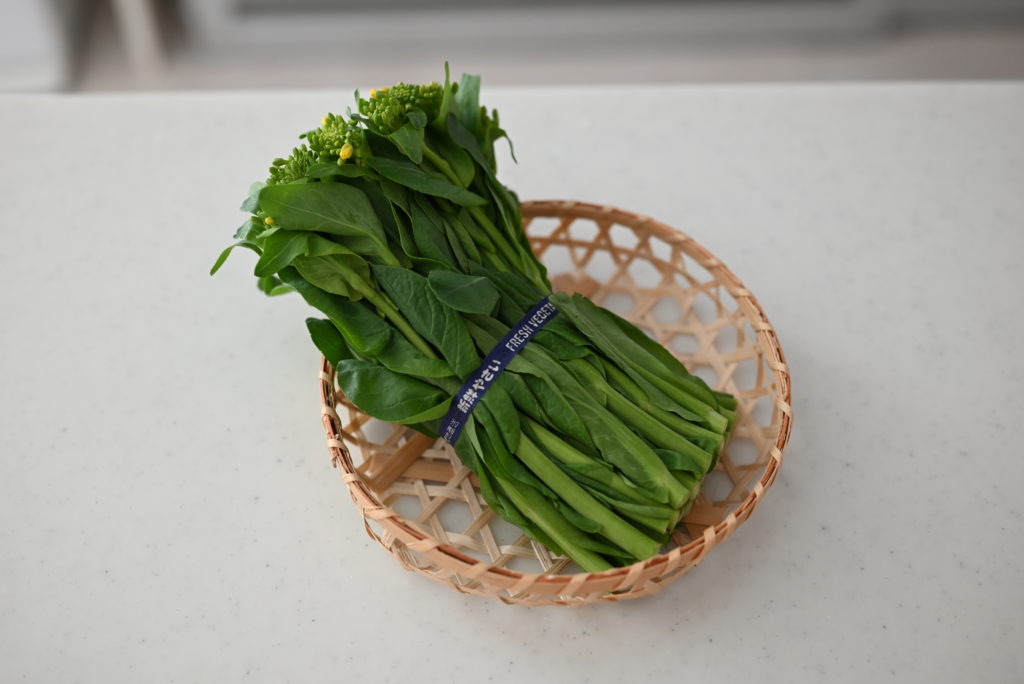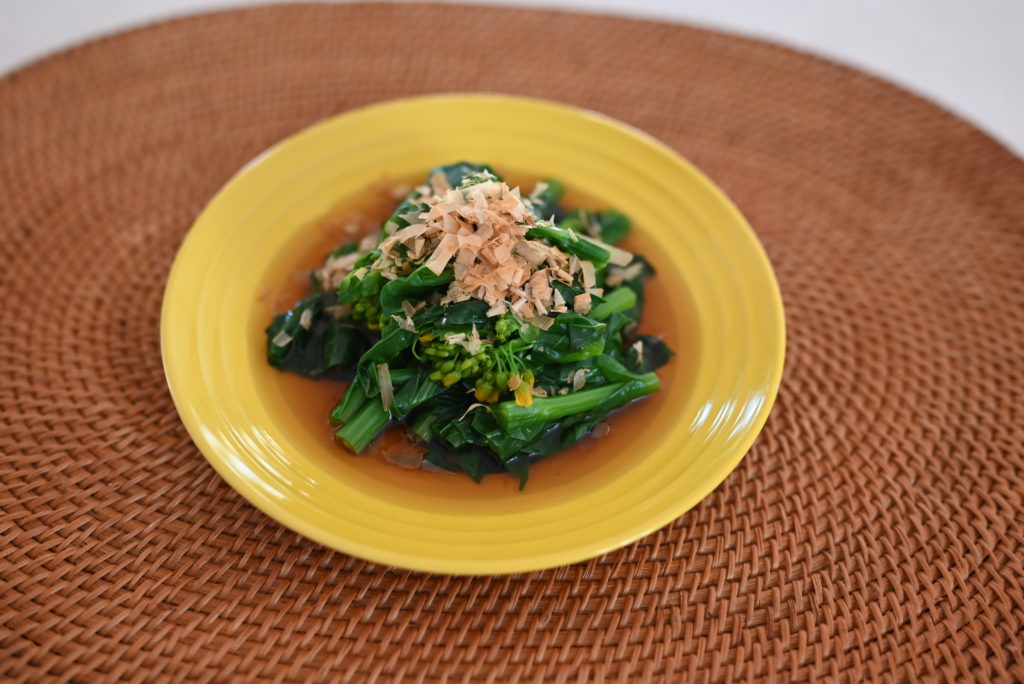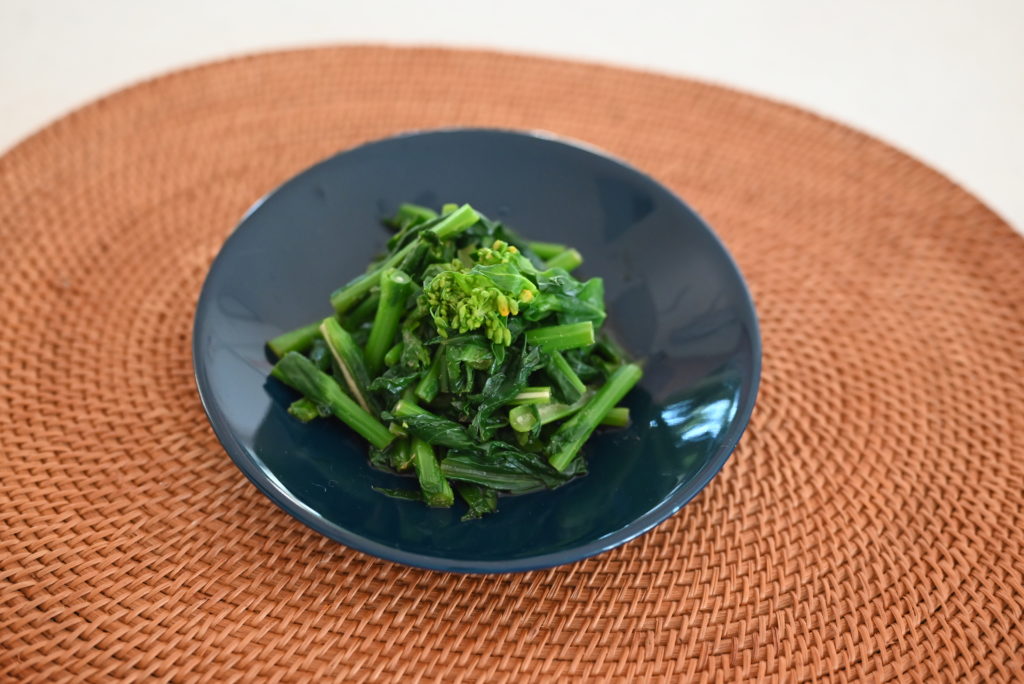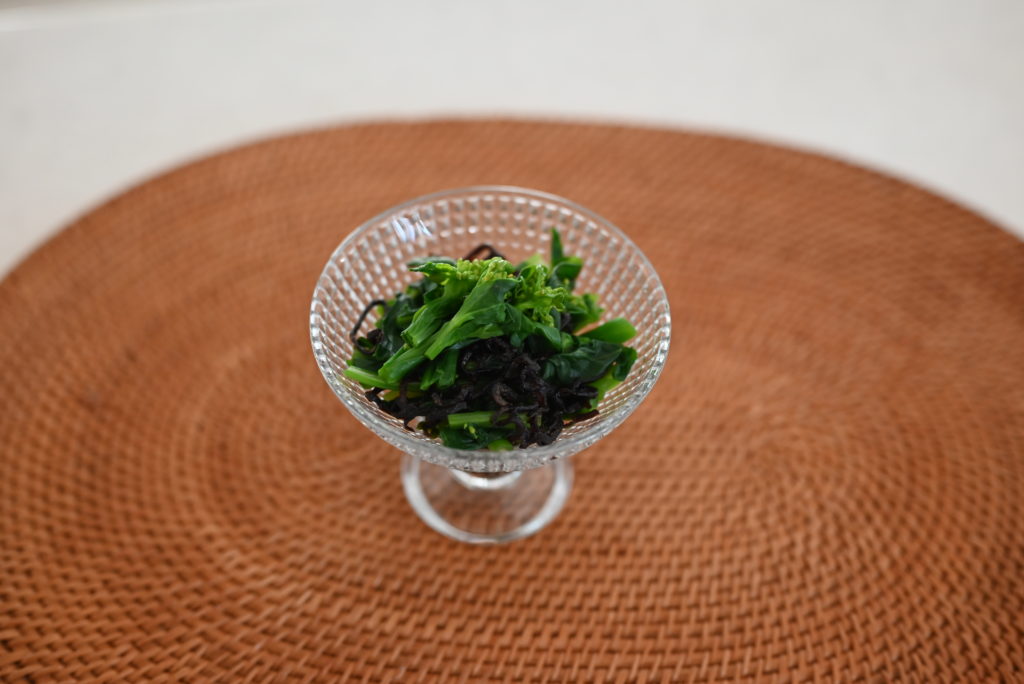Celebrating Spring with Nanohana: Three Simple Recipes for a Traditional Japanese Vegetable

Nanohana:Field Mustard
Welcome to the vibrant world of springtime cooking with Nanohana, a classic Japanese spring vegetable known as Field Mustard. Nanohana is a vegetable that represents spring in Japan. When I see Nanohana in grocery stores when it’s still cold, I realize that spring is coming soon. Renowned for its slightly bitter and peppery flavor, Nanohana is not only delicious but also an excellent choice for a seasonal detox. Today, I’m excited to share three easy recipes that showcase the versatility and delightful taste of this vibrant vegetable. Let’s dive into the culinary delights of Nanohana!
Health Benefit of Nanohana
Nanohana is a powerhouse of nutrients, boasting a high content of carotene which enhances immunity and helps prevent colds. It stands out for having the highest level of vitamin C among vegetables. Additionally, it is rich in a variety of essential nutrients including vitamins B1 and B2, folic acid, calcium, iron, dietary fiber, and potassium, making it an excellent addition to a healthy diet.
If you come across Nanohana, be sure to pick them up! Let’s make the most of them and enjoy plenty!
Choosing the Best Nanohana

When selecting nanohana, look for plants with unopened flower buds. These younger buds have the best flavor and texture, perfect for cooking. Avoid nanohana with fibrous stems, as this indicates that the plant is past its prime. Freshness is key—you want soft leaves, tight buds, and crisp, tender stems. I’m fortunate to use nanohana harvested right from my hometown of Nara, which are not only incredibly fresh but also very affordable.
Preparing Nanohana
Cleaning: Begin by trimming the stem ends and thoroughly rinsing the nanohana under cold water to remove any dirt. Soaking the plant in fresh water for about 10 minutes can help revive it and enhance its colors.
Blanching: Next, bring a pan of water to a boil and add a teaspoon of salt to help maintain the beautiful green color of the nanohana. Start by submerging the bottom half of the plant first and blanch for about one minute. Then, immerse the entire plant and continue to cook for two more minutes until the stems are tender but still crisp. Quickly transfer the nanohana to an ice bath to halt the cooking process, preserving its vibrant color. Once cooled, gently drain and squeeze out any excess moisture, taking care not to break the fibers and release any bitterness.
Three Simple Ways to Serve Nanohana
1. Ohitashi Style: The first recipe is a classic method called Ohitashi. Simply mix two tablespoons of dashi with one teaspoon of light soy sauce. Drizzle this mixture over the nanohana and garnish with bonito flakes to add a burst of umami flavor. This simple preparation allows the distinct flavors of nanohana and umami from the dashi and katsuobushi to shine through.

2. Karashi-ae: For those who enjoy a tangy kick, try the Karashi-ae. Combine half a teaspoon of yellow mustard with one tablespoon of soy sauce. Toss the prepared nanohana in this zesty dressing. The mustard’s sharpness beautifully complements the slight bitterness of the nanohana, making it a heavenly pairing.

3. Shio Kombu-ae: Lastly, the Shio Kombu-ae involves mixing the blanched nanohana with salty, savory shredded kombu kelp. This preparation resembles a quick pickle and pairs wonderfully with rice and miso soup.

Embrace the Spring with Nanohana
Nanohana is a treasure of the spring season, offering a refreshing taste and a splash of color to any dish. Whether served as a side, tossed into salads, or included in stir-fries, these simple nanohana recipes provide a perfect way to enjoy the season’s flavors. I hope you are inspired to try these delightful recipes and bring a touch of Japanese spring to your table. Happy cooking!
3 Quick and Healthy Nanohana Recipes
Equipment
- 1 frying pan
- 1 bowl
Ingredients
- 1 bunch Nanohana (Field Mustard)
Ohitashi
- 2 tbs Dashi
- 1 ts light soy sauce
- Katsuobushi
Karashi-ae
- ½ ts Karashi (Japanese yellow mustard or yellow mustard)
- 1 tbs Regular soy sauce
Shio Kombu-ae
- 1 tbs Shio Kombu (salted shredded kombu)
Instructions
How to prepare Nanohana
- Cut off the stem ends and give the plant a good rinse under cold water to remove dirt. Then, let it soak in fresh water for about 10 minutes.
- Bring a pan of water to a boil and add a teaspoon of salt. This helps lock in that beautiful green color. Grab the leaves and submerge the bottom half of the plant first, blanching for about a minute. Then dunk the whole thing in and cook for two more minutes until the stems are tender but still crisp.
- transfer the Nanohana to an ice bath to stop the cooking. This keeps the color nice and vibrant.
- Once cooled, gently drain and squeeze out any excess moisture, carefully not to break up the fibers.
- Cut the stem part into two to make it easy to eat.
Ohitashi
- Mix 2 tablespoons of Dashi and 1 teaspoon of light soy sauce. Pour it over then top with some bonito flakes for extra umami flavor.
Karashi-ae
- Mix 1/2 teaspoon yellow mustard and one tablespoon of soy sauce together and toss with the Nanohana.
Shio Konbu-ae
- Mix the Nanohana with some salty, savory shredded kombu.
